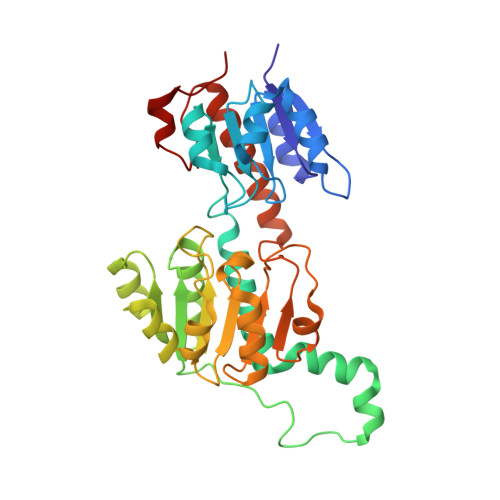New Insights Into the Mechanism of Substrates Trafficking in Glyoxylate/Hydroxypyruvate Reductases.
Lassalle, L., Engilberge, S., Madern, D., Vauclare, P., Franzetti, B., Girard, E.(2016) Sci Rep 6: 20629
- PubMed: 26865263
- DOI: https://doi.org/10.1038/srep20629
- Primary Citation of Related Structures:
5AOV, 6BII - PubMed Abstract:
Glyoxylate accumulation within cells is highly toxic. In humans, it is associated with hyperoxaluria type 2 (PH2) leading to renal failure. The glyoxylate content within cells is regulated by the NADPH/NADH dependent glyoxylate/hydroxypyruvate reductases (GRHPR). These are highly conserved enzymes with a dual activity as they are able to reduce glyoxylate to glycolate and to convert hydroxypyruvate into D-glycerate. Despite the determination of high-resolution X-ray structures, the substrate recognition mode of this class of enzymes remains unclear. We determined the structure at 2.0?? resolution of a thermostable GRHPR from Archaea as a ternary complex in the presence of D-glycerate and NADPH. This shows a binding mode conserved between human and archeal enzymes. We also determined the first structure of GRHPR in presence of glyoxylate at 1.40?? resolution. This revealed the pivotal role of Leu53 and Trp138 in substrate trafficking. These residues act as gatekeepers at the entrance of a tunnel connecting the active site to protein surface. Taken together, these results allowed us to propose a general model for GRHPR mode of action.
Organizational Affiliation:
Univ. Grenoble Alpes, IBS, F-38044 Grenoble, France.





















